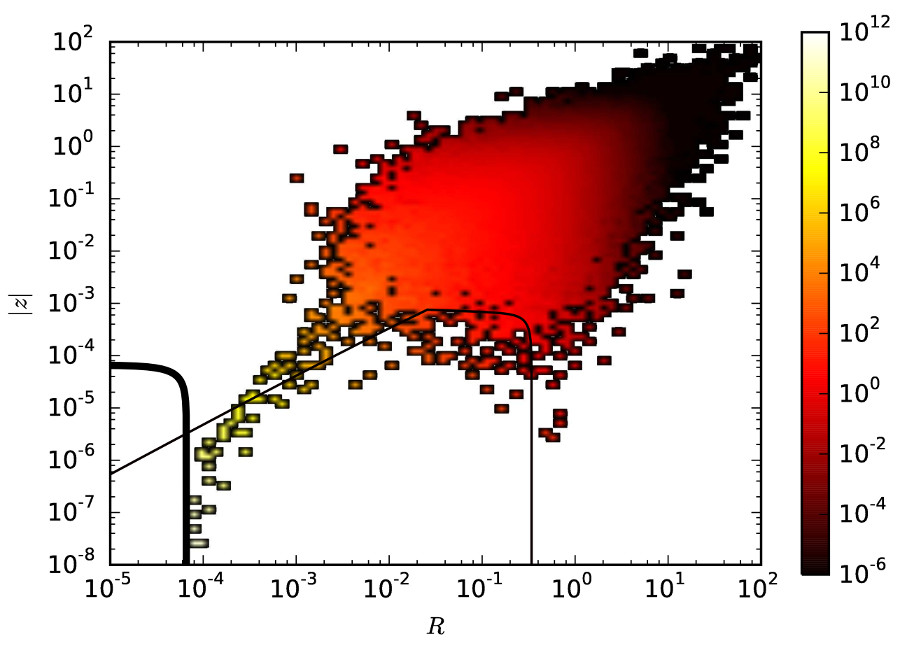
In this long term “Silk Road” collaboration (Heidelberg-Kyiv-Almaty-Beijing), we studied several aspects of interactions of stars with gaseous disks in active galactic nuclei. We performed high resolution N-body simulations with an added source of friction (drag) representing the disk. We studied how the disk affects the tidal disruption event (TDE) rate of stars, as well as the formation of a stellar disk from captured stars. We found that the TDE rate may increase by a factor of ∼10 (compared to a galactic nucleus without a gaseous disk). The total mass accreted from disrupted stars though is not a significant contribution to the black hole’s growth.
The figure (from Panamarev et al. 2018) shows the spatial density distribution of the nuclear stellar cluster in our simulation, and in particular the formation of a disk-like substructure due to the accretion disk. The thick black line represents the accretion radius.
There were several follow-up subprojects planned to address shortcomings of the model we used. One important issue was that we used single-mass models. In future simulations, we planned to take a mass spectrum into account (including stellar evolution), which also means stars would have different radii and will thus be differently affected by the drag. Another very important caveat was that our disk was static, i.e. not affected by the stars interacting with it. Therefore hydrodynamical modelling of the disk is needed to understand the disk’s response to the stars passing through it will be investigated in the next phase of this subproject.